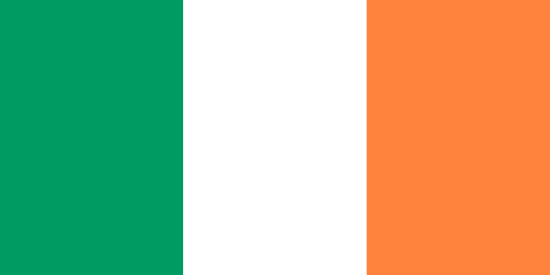"Céad Míle Fáilte | A Hundred Thousand Welcomes"
About:
Dublin, capital of Ireland, was founded by the Vikings around 841 AD. It flourished under Norman rule in the 12th century and became Ireland's principal city. Following the Act of Union in 1800, Dublin experienced a decline, but the 20th century brought independence and resurgence. Today, it's a vibrant, cosmopolitan city, renowned for its cultural and historical heritage.
When to visit:
Dublin, the capital city of Ireland, is a vibrant destination that can be visited year-round. However, the best time to visit Dublin on a holiday is during the summer months of June to August when the weather is mild and the city comes alive with festivals and events. This is also the peak tourist season, so be prepared for larger crowds and higher prices. For a quieter experience with lower prices, consider visiting in the shoulder seasons of spring (March to May) or fall (September to November). No matter when you choose to visit, Dublin's rich history, lively culture, and friendly locals are sure to make your holiday a memorable one.
When to avoid:
Dublin, the capital of Ireland, experiences its peak tourist season during the summer months of June to August, when the city is bustling with visitors from around the world. However, the worst time to travel to Dublin on a holiday would be during the winter months of December to February. This is when the city experiences its coldest and darkest days, with shorter daylight hours and higher chances of rain and strong winds. Additionally, some attractions and outdoor activities may be limited during this time due to weather conditions. It is advisable to plan your trip to Dublin during the more temperate seasons of spring or fall to fully enjoy all that the city has to offer.
Winter (Dec-Feb)
In Dublin, winter (December-February) is the coldest and wettest season. Temperatures average between 2°C-8°C. Rainfall is frequent, with up to 21 days of precipitation per month, making it the wettest period. Sunlight is scarce, with only 1-2 hours of sunshine daily. Cloud cover is heavy, contributing to the overall grey atmosphere. An average day for a visitor involves bracing the chilly winds, navigating through frequent drizzles, and appreciating the indoor warmth of Dublin's historic pubs and museums.
Summer (June-August)
In Dublin, the warmest part of the year typically spans from June to August, which is considered the city's summer season. During this period, the average high temperatures range from 17°C to 20°C (63°F to 68°F), while the average low temperatures range from 10°C to 12°C (50°F to 54°F).
Rainfall during these months is relatively lower compared to other seasons, averaging about 50-60mm per month. However, Dublin is known for its unpredictable weather, so carrying an umbrella or a raincoat is advisable even in summer.
The city enjoys an average of 5-6 hours of sunlight per day during summer, with the longest day in June providing up to 17 hours of daylight. Humidity levels are usually moderate, with average levels ranging from 70% to 80%.
Cloudiness varies, with some days being mostly clear and others being partly cloudy. On average, you can expect about 17-20 days per month with significant cloud cover.
A typical summer day in Dublin for a visitor would start off cool in the morning, gradually warming up towards the afternoon. There's a good chance of experiencing a light drizzle even on warmer days. The city's lush landscapes are at their greenest during this time, making it perfect for outdoor activities. The extended daylight hours provide ample time for sightseeing. Despite the warmth, the breeze from the Irish Sea often brings a refreshing coolness.
Language:
In Dublin, the capital city of Ireland, English is the most commonly spoken language. However, Irish (Gaeilge), although less commonly used on a daily basis, is also an official language of Ireland and can be heard in certain contexts. Additionally, due to immigration, languages such as Polish, French, Lithuanian, and Spanish are also spoken.




